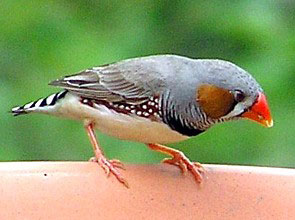 |
Commercial home aviary (Photo credit: Wikipedia)
|
Aviculture is also one way of contributing to the environment as keeping birds in an aviary under controlled conditions protects them from natural disasters and situations that can severely decrease their numbers. It also enables bird enthusiasts to study the behavior of certain avian species and find ways to forestall their extinction.
Aviaries have been in existence since the 1800s, with an aviary known as the Raven Cage being considered as one of the oldest structures in the London Zoo. An aviary is akin to a cage but where cages confine birds to a particular space, aviaries allow them to fly in much larger spaces. Also, unlike cages, aviaries simulate a bird's natural environment with the addition of plants and shrubbery within the space.
If you're considering starting one in your home and deciding on which birds to choose, there are several factors you need to think about and seriously consider if you are to be a successful aviculturist. First, you must consider the climate in your location and choose birds that are well-suited for it. Also, don't make the mistake of choosing birds that are too large, too loud or too expensive as they can become ultimately too much to handle.
For beginners, the first choice should be canaries which are among the most popular aviary birds in the world. Well-known for its singing prowess and vibrant colors, the canary is ideal for those just starting out in aviculture because they don't require too much caring for and will be quite happy to be left to their own devices. If you want a singing canary you'll have to make sure you get a male one as female canaries don't sing.
Another bird that is known for its singing prowess is finches. As fast flyers, they can be fun to watch as they zip from one corner of the aviary to another, twittering in tones that are several decibels below what parrots are capable of. Finches are ideally bought in pairs and need lots of flying space as they do love to fly. Be careful though, that they don't get too crowded as territorial fights can erupt.
Budgerigars or parakeets are perhaps the most ideal aviary birds since they are relatively inexpensive, easy to dispose of and just as easily replaced, which is why some people tend to disregard this bird and forget the fact that they can be trained to be good talkers despite their small voices. When patiently handled, budgies can bond closely to their human companions and are ideal pets for children. Quaker parakeets, on the other hand, need to be handled carefully as they are considered illegal in some states because they are considered threats to local agriculture.
If you want birds that can be petted, then cockatiels are what you should get. They love to snuggle and be petted which is why they are considered the most affectionate birds. These small parrots also come in vibrant colors and can also be trained to talk and others in whistling. Most parrot species like the poicephalus parrots and the Pionus parrots are an easy-going and gently bunch that is not as noisy as some of their mates and can also be easily taught the gift of gab. You can also consider their livelier and flashier cousins the Amazon parrots, who although slightly quieter, love to attract attention to themselves and are easy to handle as well.
And last but not the least there's the peach-faced lovebirds which, in addition to being easy to care for are also affectionate and love to be petted. They can be carried in your pocket or perched on your shoulder but must be bought in pairs as otherwise, they waste away without a suitable companion. They tend to be on the quiet side but are known to be able to learn a few phrases every now and then.
Of course, having the best aviaries to keep your birds it is also important in your success as an aviculturist.
The great thing about getting aviaries these days is they are available online as well so that all you need to do is to pick and choose the best size and style for your home or backyard. Remember to get one that has enough space so that even if you put varied species in it you won't find yourself having to settle territorial fights. Also get ones that are easy to clean, preferably with removable bottom trays to clean droppings easily.
By Jesse Burns
Whatever your reasons for starting a bird aviary are, you'll need to get the best bird aviaries money can buy. Check Simplysheds bird aviary and be on your way to becoming the best aviculturist possible.
Article Source: EzineArticles
|














